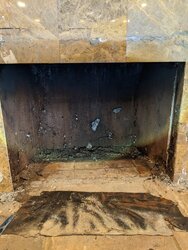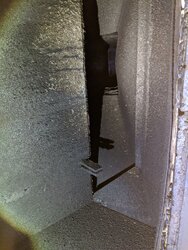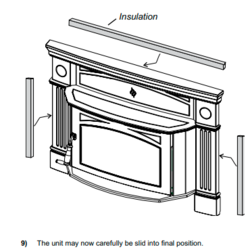I came across a good deal on a HI300 at auction. I have an old suburban FP8-84U(I've never been able to figure out what those numbers mean). Its pretty but heat output I found lacking. it would heat the room its in (400sqft)but thats about it. After pulling it out it just has a rectangle shaped hole and vents directly into the chimney. So I would like to discuss what I can do to make sure this one is a success! The fireplace looks to have a steel frame that had the damper attached but its gone now. The frame does make it a offset up into the chimney through a seven inch gap. Based on what I've seen on here do you think a 6 inch SS flex kit with the 1/2 inch insulation be the safe bet?
I have a tangent question regarding a part that was missing. There is an insulation kit that comes with the faceplate that was missing. The insulation is used to make the seal against the face of the fireplace. On my old FP8 they had a caulk of some sort that had degraded so I stuff strips of standard fiberglass insulation in there and it did great. Do you think that would be a good idea here or is there a better way
I have a tangent question regarding a part that was missing. There is an insulation kit that comes with the faceplate that was missing. The insulation is used to make the seal against the face of the fireplace. On my old FP8 they had a caulk of some sort that had degraded so I stuff strips of standard fiberglass insulation in there and it did great. Do you think that would be a good idea here or is there a better way





